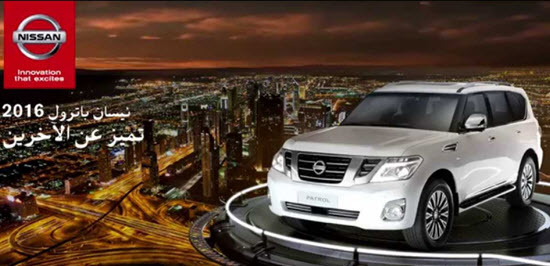According to the Northwest University Qatar estimates in their Media Industries in the Middle East 2016, the total ad market in the Middle East was valued at 5.5 billion USD in 2015. While it only accounted for a small percentage of global ad spend in 2015, the market in the Middle East is ripe with opportunities for marketers to expand their advertising. Though the current market structure differs greatly from that of the global market, or even other underdeveloped markets, the MENA region is seeing a gradual shift into the modern era of digital marketing, an area especially pertinent to the region’s 141 million internet users.
Mediums of Arab Advertising
The vast majority of advertising in the MENA region is still primarily television, which accounted for 3.37 billion in revenues. Despite its clear dominance and favouritism among advertisers, the revenues per capita in the Middle East rests only at 17 USD, verses 195 USD in North America, 80 USD in Western Europe, and 43 USD in Latin America. Magazine advertising in the Middle East region has declined in the past five years to 277 million, representing just five per cent of marketing revenues in 2015, compared to 9 per cent in both North America and Western Europe. Radio accounts for 168 million, accounting for the smallest proportion of radio advertising worldwide.
Newspapers still account for a significant portion of the MENA advertising market at 1.772 million, or 32 per cent of the Middle East ad market. While this is a decline from 2010, when newspapers accounted for 45 per cent of the advertising, it’s nearly double the portion of the next largest newspaper advertising market in Western Europe at 17 percent. The decline is in part explained by the growth of digital advertising in the MENA region. From 2010 to 2015, digital advertising increased from 105 million USD to 550 million USD, or 10 percent of industry mediums. According to the NU-Q report, the MENA region has seen exponential growth, though it still only accounts for .3 per cent of the global digital advertising revenues of 550 million in 2015.
Ad Trends and Projections in the Middle East
For the past three years, the largest advertising buyers have been governments in the Middle East, followed by the food, beverage, and tobacco industries, hygiene and household products, and telecommunications and utility companies. Certain types of mediums are more popular with different sectors. For example, newspapers are still preferred by government, auto, and banking providers, while retail products are more likely to be marketed via television. Adoption of digital advertisement has been slow, but increases each year. Mobile advertising is estimated at only 6 per cent of ad expenditures in the region, even though the Middle East has one of the highest rates of smartphone usage in the world.
The slow and resistant transition from traditional print media to digital marketing in the region means that there are many opportunities available for savvy marketers. With only 10 percent of MENA ad spend focused on the digital market, there is a vast gap between where advertisers spend their money, and where consumers spend their time. In 2015, the increase in television and digital marketing spending balanced losses in print media, and is continuously projected to grow.
For 2016, the ZenithOptimedia report forecasts an 11 percent drop in overall advertising spending in the Middle East, resulting from the devaluation of oil. They also predict an average decrease in ad spending from 2015 to 2018 of 5.8 percent. However, digital ad spend in MENA is expected to reach 1 billion by 2017, given its trajectory from previous years and the increasing reliance of marketers on less traditional mediums. In a conflicting report from Carat Global, the MENA advertising market is projected to increase by +1.3 percent overall in 2016, attributed to the significant global events such as the Olympics, European Cup, and US Presidential elections.
Companies that Spend the Most Ads in the Arab World
Despite the conflicting forecasts for 2016, the largest advertising market in the Middle East remains the UAE. Advertisers spent 531 million USD in 2015, compared to 312 million in Saudi Arabia, and 144 million in Qatar. As the UAE is currently the largest market in the MENA region, more data available regarding ad spending there. According to the Dubai Lynx MENA Showcase book, the top ad spenders in the UAE during 2014 were telecommunications companies Etisalat at just over 48 million, and Du at 36.6 million. Third place McDonalds drops to just over 19 million a year in spending, followed by Samsung, Carrefour, Toyota, and Arabtec Holding, the region’s largest construction and development company. Emirates Airline and Emirates NBD, a bank, both spent around 13.9 million USD in 2014. Finally, Volkswagen spent 12.1 million USD.
The breakdown of the top ten companies is pretty unsurprising, as even in the US, a vastly different market structure, the top spenders are telecom companies, car companies, McDonald’s, and retailers such as Walmart (a Carrefour equivalent). So despite the fact that the preferred mediums for advertisers in the MENA region differ from those in the States, the people spending the most money are similar businesses.
Conclusion
Looking to the coming years, with the consistently increasing number of Internet users in the Middle East, the relatively underdeveloped digital marketing environment, and the shift from traditional print media into the technological sphere, it will be ever increasingly important to employ online marketing techniques in order to keep up with the shifting market.



